19th century trail

Description
This trail will allow you to discover Mulhouse as it was in the 19th century, at the time of its textile industrial development. Find the location of old factories, mansions and the remains of this unprecedented development.
Technical Information
Altimetric profile
Starting point
Points of interest
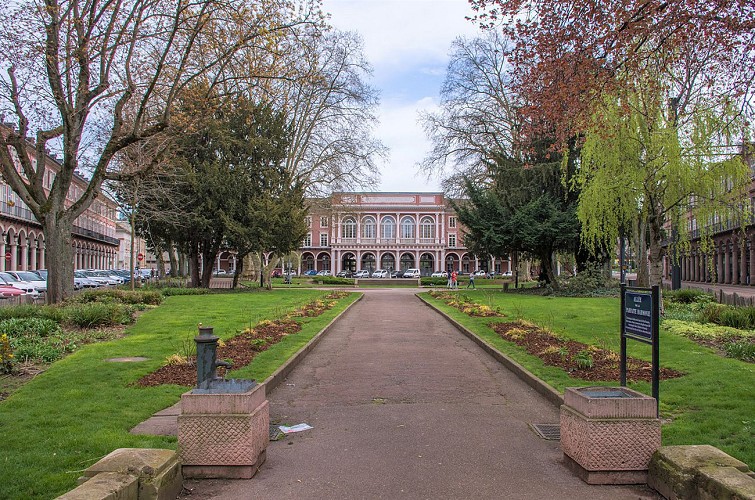
Hôtel de la Société Industrielle
Built between 1827 and 1829, this building was originally the headquarters of the Cotton Exchange and the Chamber of Commerce and Industry. It houses the Société Industrielle de Mulhouse, created in 1826 by young industrial philanthropists from the Mulhouse Masonic lodge. Still in operation, SIM is a think tank, made up of specialised committees (chemistry, mechanics, fine arts, public utility, etc.) which is at the origin of many economic, social and technical advances.
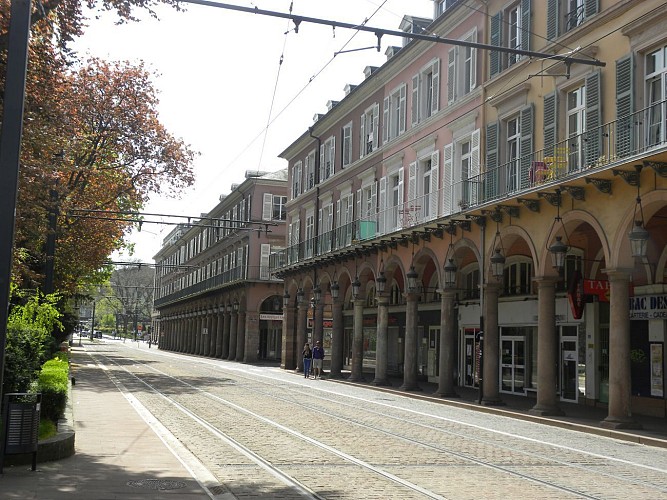
Arcades du Nouveau Quartier
Originally called the Charles X district, this first urban ensemble outside the medieval enclosure was built to the plans of young Strasbourg architects Jean-Godefroi Stotz and Félix Fries. To design their project, they were inspired by the Rue de Rivoli in Paris.

Townhouse
Dating from 1850, this manor house makes the transition from the right-of-way of the Nouveau Quartier to the fast-developing sector of the Sinne.
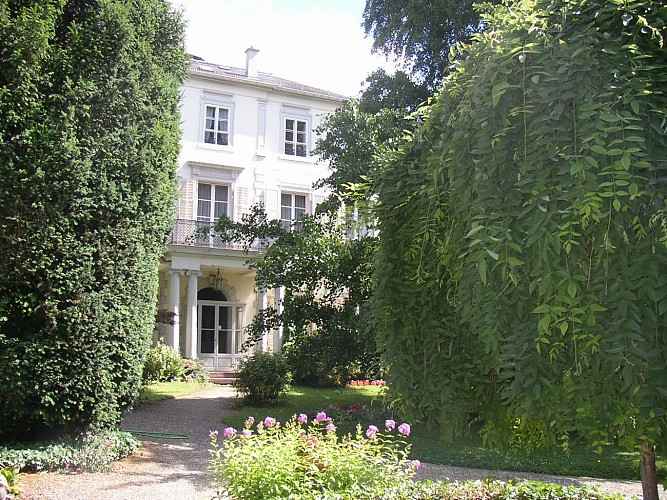
Mantz mansion
This mansion bears the family name for which it was built around 1840. The «Palladian» style is reminiscent of the colonial houses of the southern United States. Originally, it was located in a garden area.
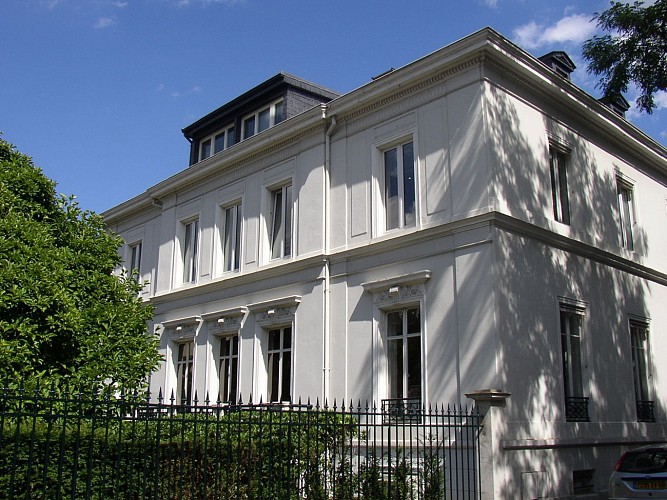
Risler mansion
Built around 1840, it is home to the Risler family. It was also the Mulhouse workshop of the world-renowned architect François Spoerry, architect notably of the Tour de l’Europe in Mulhouse.
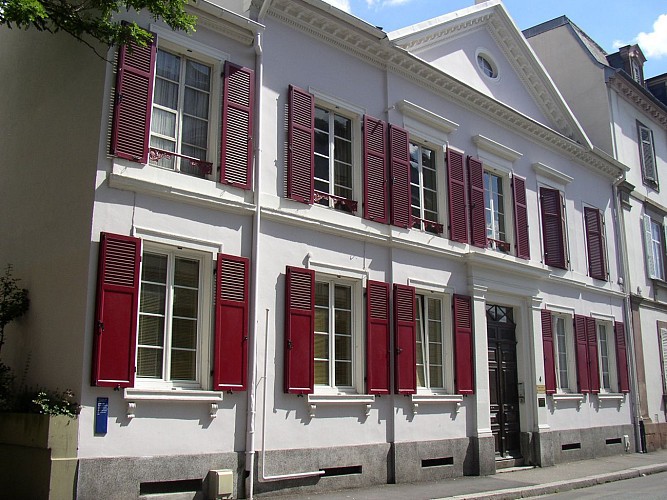
Maison de commerce
Dating from 1850, it was the first headquarters of the Company Edouard Vancher & Cie after its transfer from the Mirror Door, then a cotton trading house.
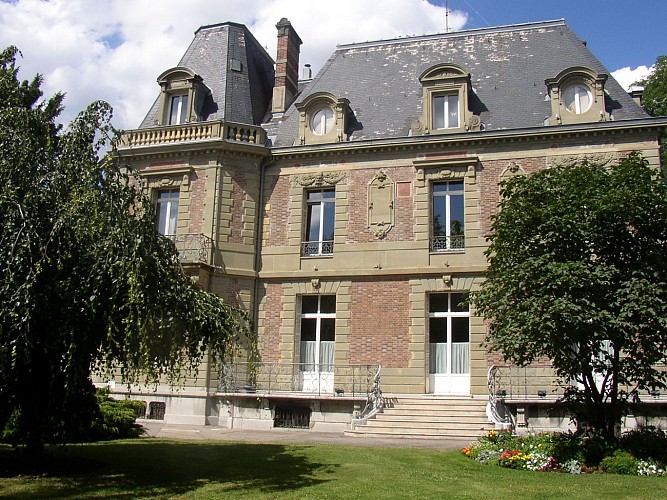
Vaucher-Lacroix Mansion
Owned by Edouard Vaucher, a Mulhouse merchant and banker, this stone and brick villa was built in 1867 by the architect De Rutté. At the death of Edouard Vaucher, it was occupied by his son-in-law, Camille de Lacroix, until 1924. The town has owned the site since 1951, which now houses the Municipal Health and Hygiene Service.
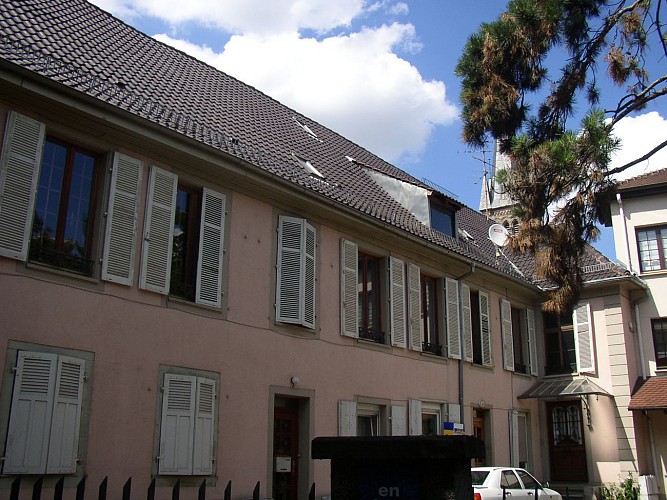
Former weaving workshop Grossheintz and Hartmann
In operation since 1806, this building was the first large cotton weaving factory in the city. It will cease its activity in 1836.

Thierry-Mieg mansion
This house was acquired in 1818 by Mathieu Thierry-Mieg. This famous chemist and manufacturer of painted canvases created the andrinople red which made the success of the Mulhouse Indian women. Passionate about agronomy, he set up a model farm at the back of his house, famous for its cattle breeding. Gaspard Ziegler then Frédéric Lamey, both directors of the Société Alsacienne de Construction Mécanique (SACM), became successive owners.
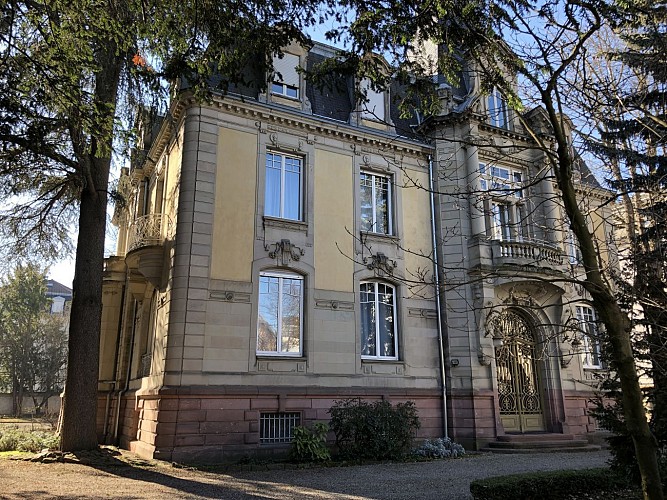
Schoff mansion
Built in 1903 for the industrialist Schoff, co-manager of Schaeffer & Cie, on plans by Charles Schulé, this mansion is typical of the end of the 19th century. Today, it serves as a residence for the Sous-Préfet.
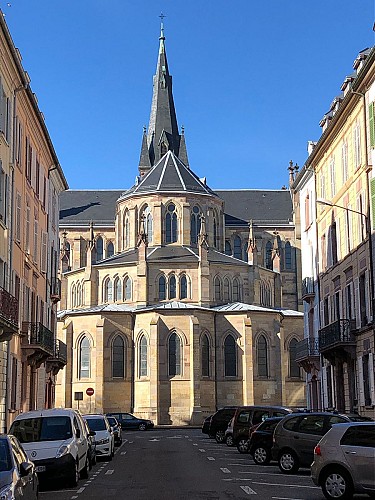
Saint-Etienne Church
The influx of workers, mostly Catholics, made it necessary to build a second church, the Church of St. Mary (made Catholic in 1803) being too small to receive all the faithful. The first stone was laid in 1855 in a district undergoing urban remodelling, where orchards and vegetable gardens still dominate. The building, in neo-gothic style inspired by the great cathedrals and with high-quality interior decoration, was completed in 1860. Its radiant chapels and the perfect layering of the masses make it an undeniable architectural success.

Bourgeois building
Situated near the old market halls, this 1870 building had a ground floor for commercial use. The painter Jean-Jacques Henner (1829-1905) had a studio there.

Former Bank of Mulhouse
Created in 1872, the Bank of Mulhouse moved to rue de la Sinne in 1882-1883. It is one of the main banking establishments of the end of the 19th century.

Parc Steinbach
The park is located on land between the old city ditches. In 1798, the manufacturer Blech, owner of the Maison Vetter, now the Musée des Beaux-Arts, acquired the land and filled in part of the ditches to create a garden that extended as far as rue du Sauvage. Its influence gradually diminished in favour of the construction of various establishments, such as the theatre and by filling in the Sinne ditch. Georges Steinbach bought the house and garden, which were bequeathed to the town when he died in 1893. The garden, which included production greenhouses, becomes public.

Gangloff building
Built in 1905-1906 for Henri Gangloff, based on plans by Louis Schwartz, its facade is decorated with an allegory recalling its original function as an art gallery, bookshop and antique shop attributed to the sculpture Bartholdi (a native of Colmar and creator of the Statue of Liberty). Acquired by the Schlumpf brothers, famous industrialists from Mulhouse who were at the origin of the automobile collection of the same name, it was transformed into a hotel in 1920.
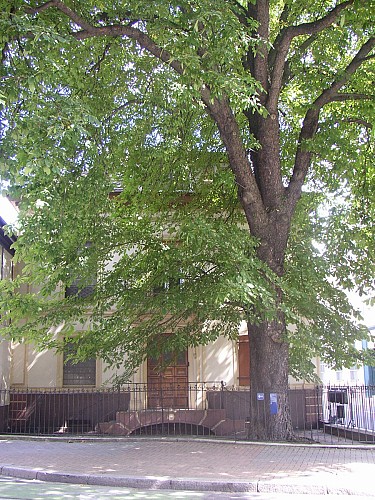
Maison bourgeoise
Dated 1847, this mansion was built in a cul-de-sac overlooking the Sinne River before it was covered and turned into a street between 1859 and 1866.

Théâtre de la Sinne
The Théâtre de la Sinne in Mulhouse, in its prestigious 19th century red and gold Italian-style setting, hosts a very eclectic programme: boulevard theatre, shows from the Opéra du Rhin, concerts from the National School of Music, Dance and Dramatic Art, Alsatian theatre and the Tréteaux de Haute-Alsace for performances aimed at young audiences.

Banque d'Alsace et de Lorraine
It was built in 1891 on one level according to Ernest Duvillard’s plans. Its first floor (1926-1927) is attributed to the architect Charles Schulé.
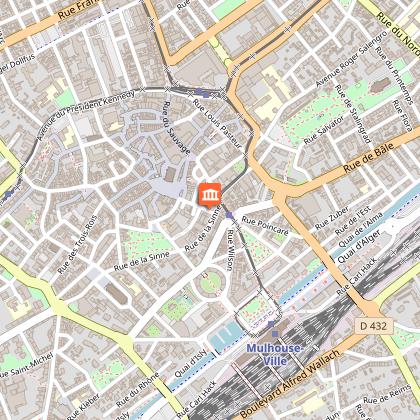
Former Hôtel de Paris
Owned by Daniel Roth, this 1838 hotel is the largest in the city with the former Hotel Central (demolished). Closed in 1859, its garden extended as far as Steinbach Square. Intended to welcome industrialists and trade representatives, this luxury hotel was also the point of departure and arrival of the courier services of Paris.
